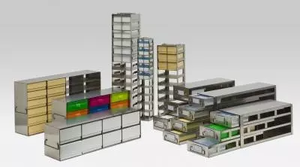
Following scientific and medical advances, the first ultra-low freezer was developed in 1991. Temperatures could reach -152° C. The advances included in vitro fertilization and stem cell transplants. Since then, cryogenic freezers have a bigger capacity, alarm system, better refrigeration technology, and improved insulation.
Twenty years of specialist expertise is responsible for ultra-low temperature freezers that offer unparalleled uniform temperatures, reliability, and safety.
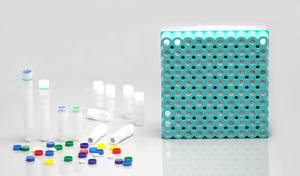
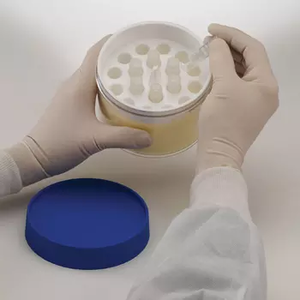
Many scientists are on the fence about cryogenics. Most have not investigated enough to have a scientific opinion. Cloning was once a process thought to be impossible. As the basis for cryonics progresses, more cryobiologists are acknowledging the scientific feasibility.
Sixty eminent scientists have affirmed cryogenics as a science-based endeavour. Science-based does not have the same meaning as current science. Cryogenics is a protoscience that is based on the expectations of repairs and vitrification of capabilities of science in the future.
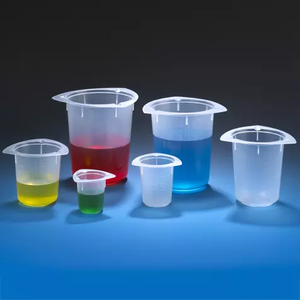
It would take a book to list all of the laboratory supplies that NewDayScience has to offer. There are four types of laboratories. They are physics, chemistry, biology, and home science labs. NewDayScience has supplies for each of them.
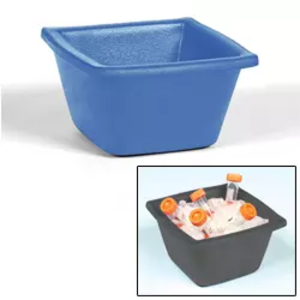
Storing samples at low temperatures is necessary to extend the viability of reserved samples. Storing samples in mechanical freezers at -80°C slows down metabolic activity but does not stop it. Sample temperatures must be below -132°C to halt metabolic activity.
Storing below this temperature assures safe preservation. The approved range for storage equipment is -80° C to +100° C. In practice, cryogenic equipment is used until temperatures reach the vapour phase temperature of nitrogen which is between -150° C to -196° C. The location and distance from the vessel of liquid nitrogen have an impact on the vapour causing temperature.
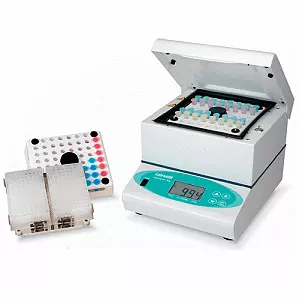
Medical specimens are delicate and require the proper care in order to be useful for determining the state of a person’s health and wellness. A modern medical laboratory functions under strict guidelines for sterilization of the environment, as well as the specimens coming into the lab for testing. In order to maintain these strict guidelines, medical laboratories need several pieces of essential equipment to house the specimens as they enter the care of the laboratories. Two of these pieces of equipment are incubators and general purpose baths. Let’s look at this equipment to understand their function, the different types of equipment, and why laboratories need them as part of their essential lab equipment line up.
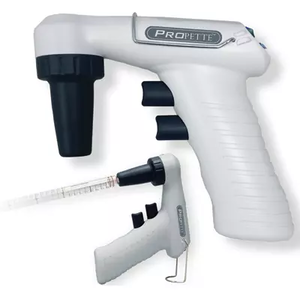
Pipette Controllers allow you to quickly fill and release accurate volumes. They attach to a pipette, which can be glass or plastic, that’s holding the liquid or volume itself. The controller’s job is to be sure you’re dispensing the correct amounts of liquid at the right times, whether you’re doing research in a lab or in a medical setting. This kind of precision is crucial to getting the exact measurements of chemicals and other liquids.
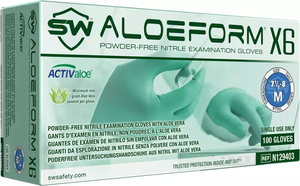
Before nitrile examination gloves were invented, doctors and nurses had no protective covering for their hands. Disposable gloves started with one man’s vision to help his wife prevent rashes from developing on her hands when they were in surgery. In 1889, Dr. William Steward Halstead noticed that his nurse, and later wife, Caroline Hampton, developed rashes from the chemicals she handled. In need of a solution, Halstead reached out to the Goodyear Rubber Co. who created rubber gloves for her hands. This was such a success that eventually his entire surgical staff wore gloves during operations.
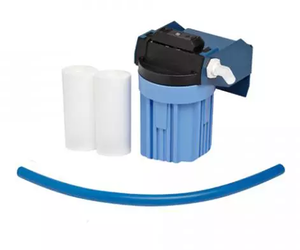
Machines that remove heat from a liquid through a vapor-compression or absorption refrigeration cycle are called chillers. The refrigeration cycle chiller creates waste heat that, when removed, results in greater efficiency. To accomplish this, liquid can be circulated through a heat exchanger, thus cooling the equipment. When it comes to vapor-compression chillers, they require compressors which are mechanical devices that can be powered by electric motors, steam, or gas turbines. These chillers utilize four basic types of compression: reciprocating compression, scroll compression, screw-driven compression, and centrifugal compression. Evaporative cooling heat rejection allows their coefficients-of-performance to be very high.
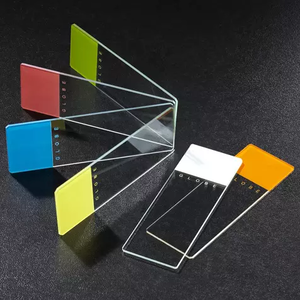
Before we discuss digital microscope cameras, let’s briefly review what distinguishes digital microscopes from other types of microscopes. A digital microscope is a variation of a traditional optical microscope that uses optics and a digital camera to output an image to a monitor via computer software. They usually have their own built-in LED light source, and since the image is focused on the digital circuit, the entire system is designed for the monitor image. There is no provision to observe the sample directly through an eyepiece, as you would find on an optical microscope, and therefore the optics for the human eye are omitted. Digital microscopes are commonly low priced commercial microscopes designed to be used with a computer.
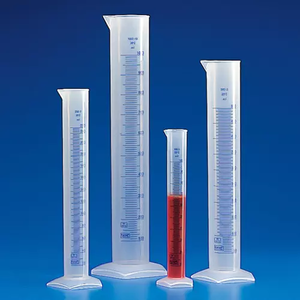
Graduated Cylinders and Beakers are both common pieces of laboratory equipment. A Graduated Cylinder has a narrow cylindrical shape with each marked line showing the volume of liquid being measured. While they are generally more accurate and precise than laboratory flasks and beakers, they should not be used to perform volumetric analysis. They are also sometimes used to measure the volume of a solid indirectly by measuring the displacement of a liquid. Whatever your use may be, these varieties can handle the task.
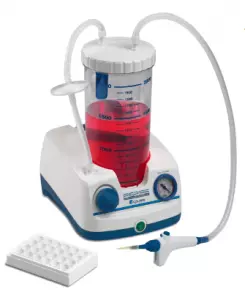
Water aspirators were once a staple in many biology and chemistry labs but are becoming an increasingly uncommon sight as they are being replaced with vacuum pump aspirators. Water aspirators are designed to connect to a lab faucet and allow water to flow through a tube inside of the aspirator, thereby creating a vacuum. While this type of aspirator is inexpensive and has done a decent job for a very long time, you may want to think about upgrading to a vacuum pump aspirator. Why? Let’s take a close look at the environmental impact, performance, and lifetime cost of a water aspirator as compared to a vacuum pump.
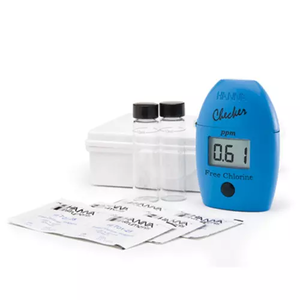
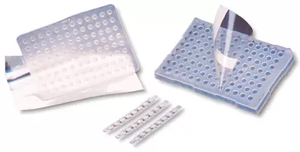
Liquid handling is one of the core functions of any laboratory, and pipetting is one of the most common functions performed in labs. It is both a measuring technique and the conveyance method used for transporting small volumes of fluid. Whether liquids are being moved on a small scale, one sample at a time, or on a larger scale, with dozens of samples at a time, there is a need to transfer liquids cleanly and accurately from one vessel to another.
Laboratories experimenting and studying biological sciences have a near-universal need for liquid handling. Those that pipette hundreds of samples a day can start to see problems like inaccurate transfers because of repetitive motion injuries with their liquid handlers. There are, however, some techniques you can employ and changes you can make to reduce the chances of repetitive stress injuries and to continue to achieve the high standards you expect in your lab while using pipettes and single or multiple channel pipettors.
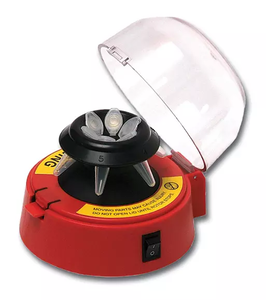
A critical piece of laboratory equipment, a laboratory centrifuge is a motor-driven device that spins liquid samples at very fast speeds around a central point. The concept behind the centrifuge is that it relies on the sedimentation principle. By spinning so quickly and forcing substances inward, which is called centripetal acceleration, the substances of greater and lesser density will separate, causing sedimentation to occur. This separation allows for isolation, study, and research of specific substances. A mini-centrifuge, also called a microcentrifuge, works in the same way, but is capable of working with much smaller samples, using micro-tubes that range in size from 0.2 ml to 2.0 ml. Its compact design and smaller footprint makes it convenient to use on the workbench, while also economizing on workspace.